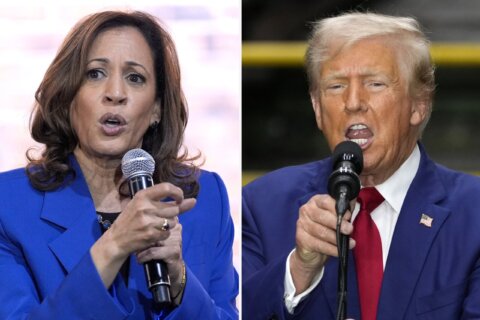As ballots continue to be counted from the presidential election around the country, one thing is clear — voting numbers plummeted for Democrats this year compared to 2020.
While Republican President-elect Donald Trump outperformed how he did in the 2020 election, his Democratic rival Kamala Harris failed to do as well as President Joe Biden when he won the presidency four years ago.
As of Thursday evening, the vote count for Harris was around 68 million, compared to Biden’s 81 million in 2020. Trump had about 72 million votes, which is close to the 74 million he received four years ago.
Democrats lost swing states and voters of color
“What really happened was a whole bunch of previous Democratic voters were upset with the Democratic Party,” said John Aughenbaugh, a political science professor at Virginia Commonwealth University.
With a win in Wisconsin, Trump cleared the 270 electoral votes needed to clinch the presidency.
He also won Michigan, sweeping the “blue wall” along with Pennsylvania — the once left-leaning, swing states that all went for Trump in 2016 before flipping to Biden in 2020.
“There were a number of subpopulations that typically vote Democratic that decided to stay home,” Aughenbaugh said. “For instance, the turnout among Arab American populations in Michigan were not as great as they were in 2020.”
Some disenchanted voters even went with a third-party candidate. Jill Stein of the Green Party and independent Robert F. Kennedy Jr. received more than 600,000 votes each. Libertarian Chase Oliver picked up nearly 600,000.
“There’s a lot of frustration, particularly among groups that the Democratic Party thought would be a consistent part of their caucus,” said Aughenbaugh. “Think about the percentage of Latinos who voted for Trump, or the number of African American males who voted for Trump, instead of a woman of color.”
Trump about doubled his share of young Black men — with about 3 in 10 Black men under the age of 45 voting for Trump, roughly double the number he got in 2020. Hispanic voters were also more open to Trump than they were in 2020. Roughly half Latino men voted for Harris, down from about 6 in 10 who went for Biden.
Voter turnout compared to 2020
One of the simplest explanations for the Democratic drop-off is that it seem like fewer people voted this year compared to 2020, when more than 158 million cast a ballot in the presidential election.
That set a new record for voter turnout, with around 66% of the eligible American population submitting a ballot four years ago. Votes are still being counted across the nation, but analysts believe that Democrats may have brought down those numbers.
“Trump’s popular vote numbers are actually pretty consistent with 2020. It’s just a huge falloff for the Democratic candidate this year,” Aughenbaugh said.
In 2020, an extraordinary factor that played a role in voting patterns was the pandemic. Many Americans were not working or were at home, and they were more motivated to participate.
“They either really liked the government’s response to the pandemic, or they did not,” Aughenbaugh said.
According to 2020 exit polling data, a significant percentage of Americans voted for Biden just because they didn’t want another four years of Trump — an ironic twist given Trump’s sweeping victory just four years later.
The Associated Press contributed to this report.
Get breaking news and daily headlines delivered to your email inbox by signing up here.
© 2024 WTOP. All Rights Reserved. This website is not intended for users located within the European Economic Area.








